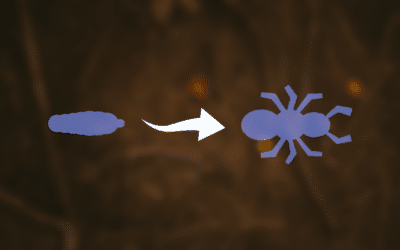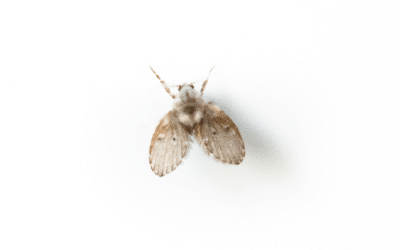One of the most common types of troubles that people have when it comes to pest problems is that they have a hard time identifying the type of pest that is the source of the problems. Fortunately, there are some ways to help you identify them. One of them is by identifying the nest that the pests have created.
Primarily flying pests, but also ground-based pests, create some sort of nest close to the property of their unfortunate victims. The key to stopping them and helping pest experts is by identifying the nest so they can come to an educated conclusion on the source of the issues. The issues being pests of course. Fortunately, we’ve gathered some helpful information to help you identify pests just by the types of nests that you may see at your home.
Pest Nests
Many of the pest nests we are referring to are flying-based pests. There are certain ground-based pests as well. What they all have in common though is the havoc that they wreak when they appear uninvited to your home. They can bite, damage your home, and ruin family and friend gatherings. Because of this damage, it is best to make sure that you identify the pest giving you the issues before you get the pest experts involved.
Some of the more common pests that people report from looking at nests include wasps, hornets, bees, ants, and many more. The issue with them is that it isn’t just one pest causing the issue, rather a colony or hive! This is why seeing any evidence of a pest nest is alarming as it can signal the appearance of an infestation, which calls for immediate attention to prevent further damage.
Types of Pest Nests
As we mentioned before, the most common types of pest nests are wasps, bees, ants, and termites. All of these pests form a nest or colony that they use as their central hub for transporting food as well as a place to reproduce. Now that you know the purposes of their nests, let’s dive a little deeper into the different types of pest nests.
Wasp Nests
Ahh yes….the dreaded wasps! You know them, see them, and know the type of pain they can inflict on a person. The yellow/black coloring of their exoskeletons is a quick warning and alarm for anyone who comes across them. It becomes more worrisome when you start noticing a large number of them as it can be a sign that you have a nest nearby, which harbors many of them.
A wasp nest is easily distinguishable by being pretty large and elaborate and often constructed in a hidden location. People commonly find them under a canopy, corner of a garage, and trees. Wasps tend to be very defensive of their nests, so if you do try and identify them, then be sure to proceed with caution, or else you might end up with a hive of wasps tailing you, which usually results in a painful sting.
Bee Nests
For bee nests, there are two common types that most people come across. Those two are honeybee hives and carpenter bee nests. They both differ from each other because of their size and their location.
Honey bee hives are commonly found in the wild, and also close to humans. These hives tend to be quite large in size and house many honey bees who are producing honey within the hive. Also in the hive is the queen, larvae, and honeycomb. Honey bees tend to get defensive if they perceive you as a threat to their hive. Removing a honeybee hive is highly regulated since they are important for the environment and ecosystem. Call an expert to help relocate the hive if you come across one.
Carpenter bee nests are more difficult to locate since, in contrast to a honeybee hive, carpenter bee nests tend to be pretty small because of the location they are built-in. Whereas honey bees construct a large hive that can hang, carpenter bees build their nests within bored holes of wood. This makes identifying their nests a bit tricky because, if you don’t immediately see a carpenter bee, you will just assume the hole is something normal. Be on the lookout for the presence of carpenter bees as you might have a hidden nest somewhere around your home.
Ant Nests
When it comes to ant nests, most of us are pretty familiar with how they look. They typically are a brownish color that is visible above ground, but they go much deeper than that. What may seem like a small hill above ground extends into a deep and complex system of pathways underground. You will easily find hundreds of ants in that colony and they are notorious for defending their nests from any potential threat. Fire ants are especially known for this defensive behavior and can swarm would-be threats pretty quickly whilst providing many painful bites.
Termite Nests
Termite nests are very distinguishable because of their note-worthy appearance. Their nests are referred to as termite mounds. When you see one in the wild, you will be pretty surprised by its size. They are large mounds of dirt that house millions of termites within them. Some other termites build mud tubes that can connect to your home, which is an expensive problem waiting to develop. Termites can chew the inner walls of your home, which can cause all sorts of problems to its foundation. Another species of termite build nests underground, which is another serious problem. Many homeowners who’ve dealt with termites know how expensive it is to fix the damage they cause. If you notice floors warping, walls sounding hollow, or chewed pieces of wood, be sure to look out for termites. You might have a potential infestation at hand.
Pay Attention To Pest Nests
Hopefully, we’ve given you a good picture of what each of these pest nests looks like. Just like any other time you put yourself in harm’s way, proceed with caution if you plan on looking for and identifying pest nests. If you’d rather not, which is understandable, then you can contact us, Meers Pest Solutions, here so we can help you identify the pest that is giving you trouble. We are more than happy to help you with any of your pest problems.




